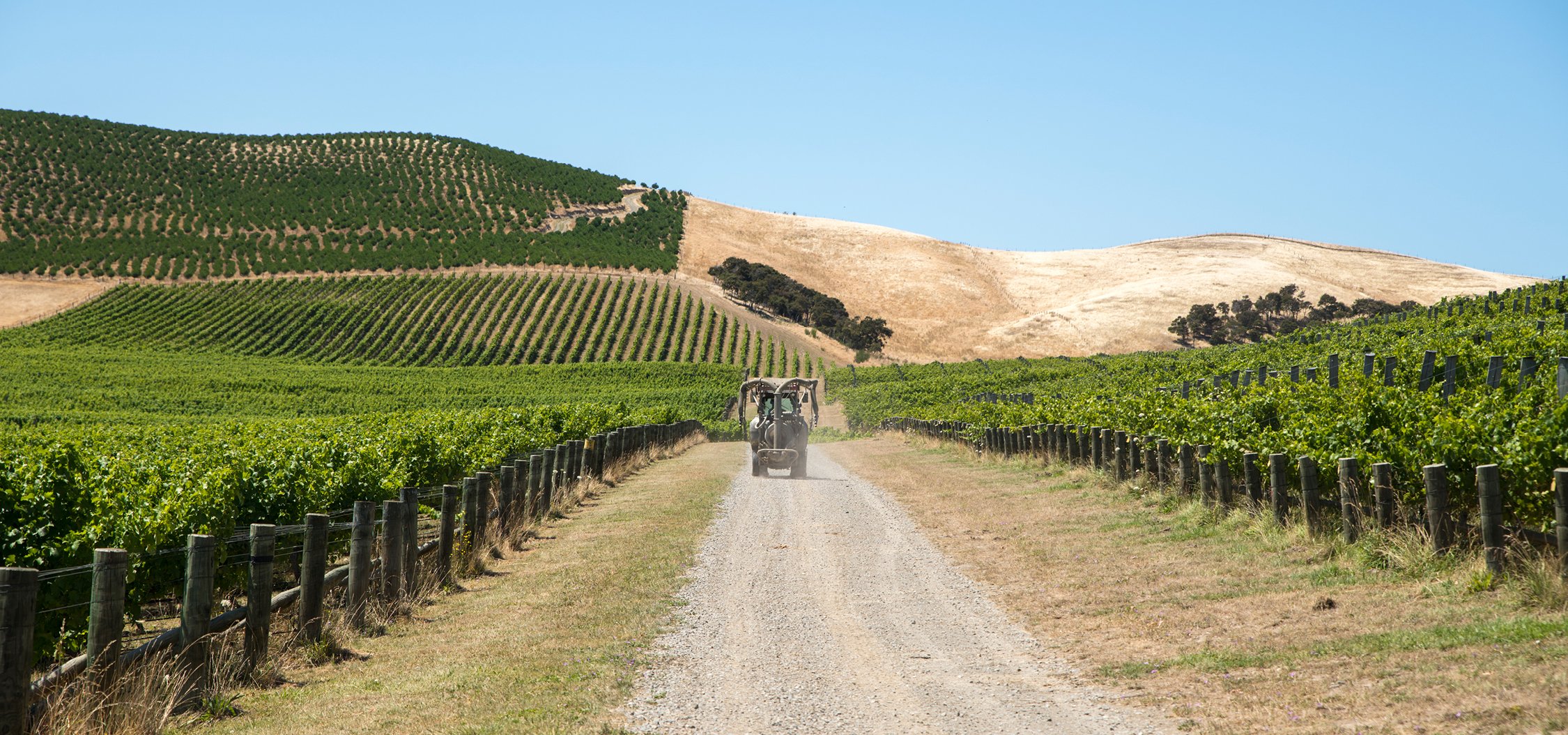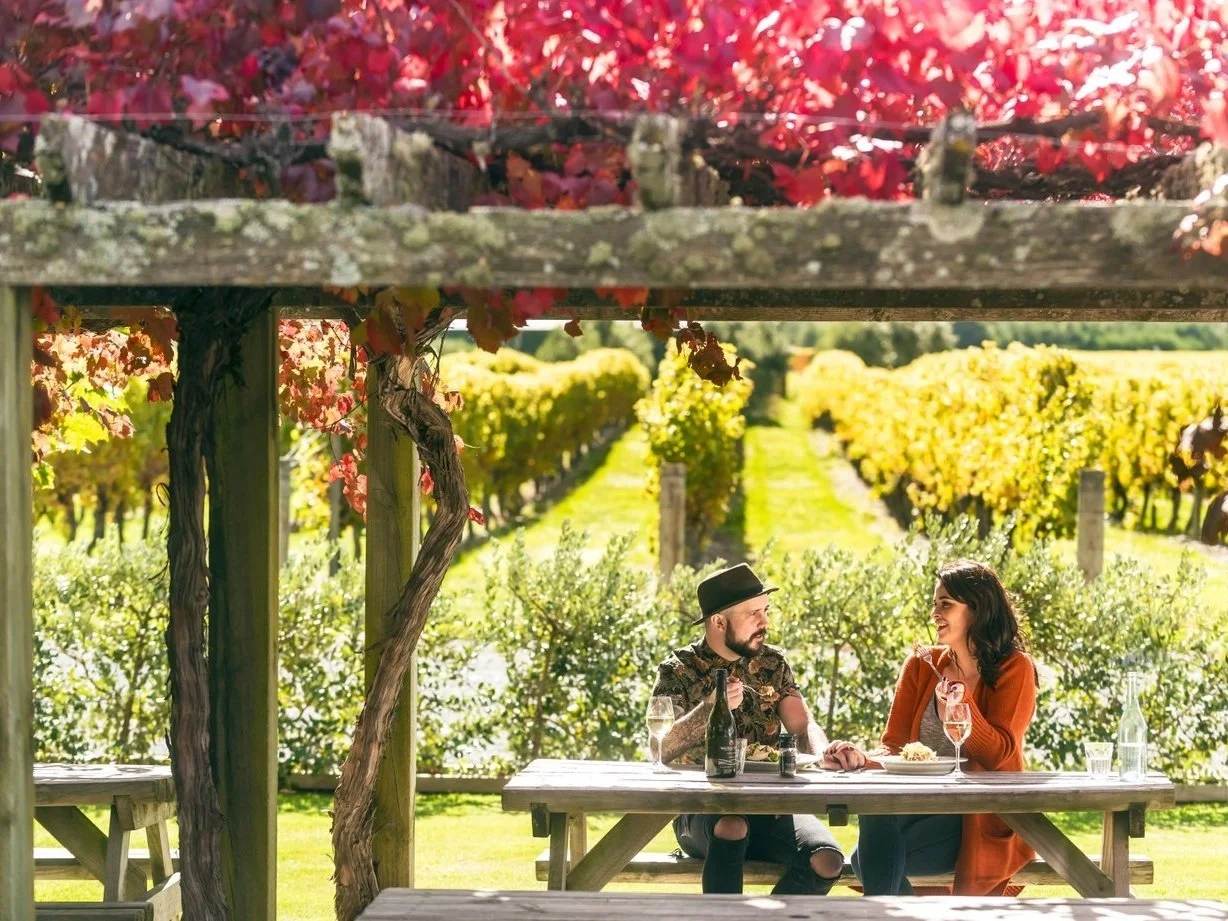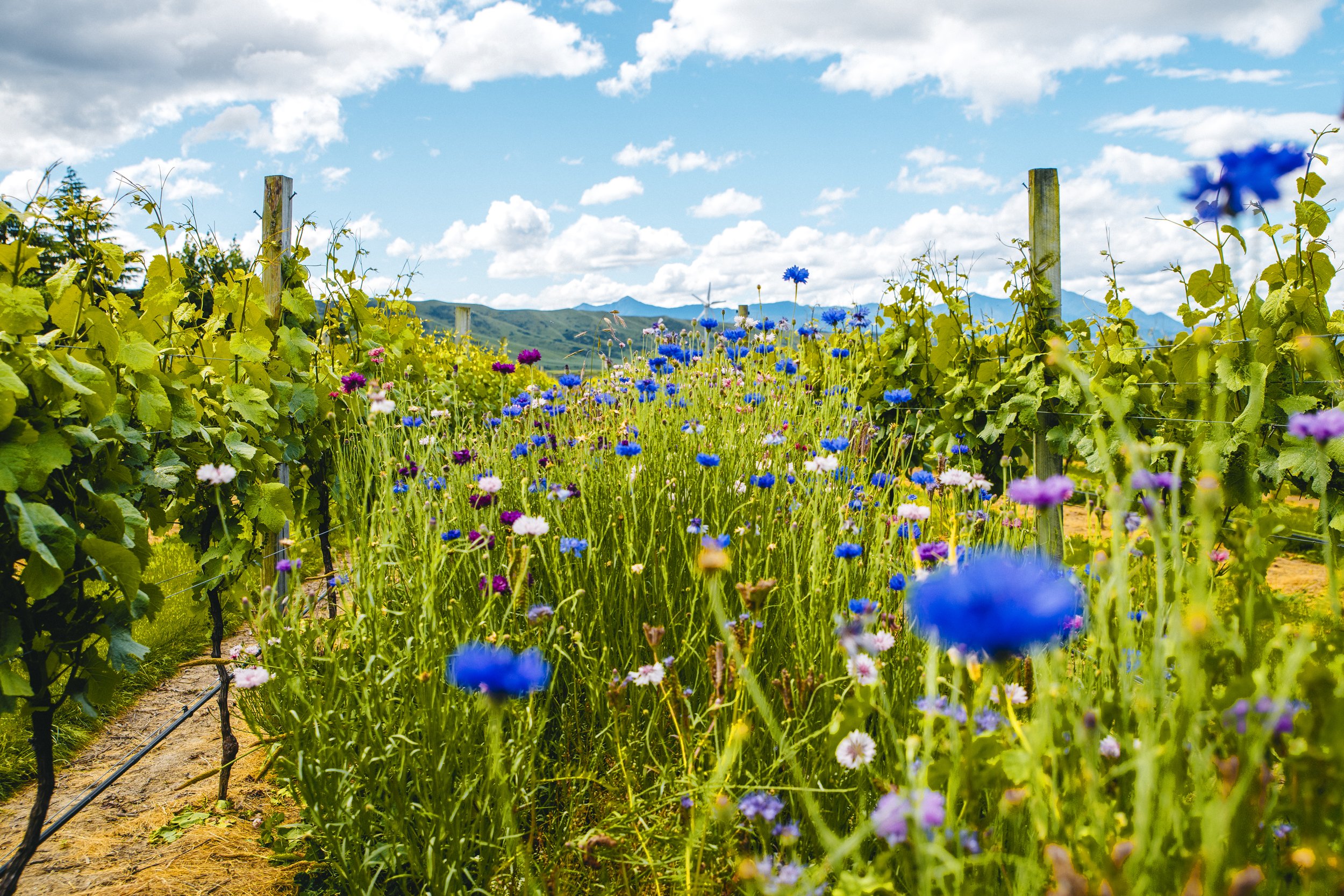Varieties & Styles Marlborough Wine is wine you know and love that continues to refresh and excite you. The sense of place in each bottle is palpable, full of surprise and delight. A Marlborough Sauvignon Blanc is a sophisticated wine that cannot be replicated. Its premium purity and flavour intensity has rightly earned its place on the world stage – the respect and care of our producers have kept it there. It is the anchor from which we curl exploratory tendrils of other varieties – Pinot Noir, Chardonnay, Pinot Gris, Riesling – and show our range. It is the wine we can always lean on
Image: Marlborough Wine Show

84%
SAUVIGNON BLANC
25,468 ha
8%
PINOT NOIR
2,323 ha
4%
PINOT GRIS
1,222 ha
3.3%
CHARDONNAY
1,010 ha
0.2%
OTHER VARIETIES
835 ha
Image: Richard Briggs
Sauvignon BlancSauvignon Blanc put us on the world stage, and we continue to prove our place there. Sauvignon Blanc has nurtured a legacy of wine, where premium wines now flow from every corner of our subregions. Each sip is a splendid surprise that deepens the appreciation for the region and the industry alike.
Impossible to imitate. The one you pick to impress, the one you pick that brings joy to the occasion and enlivens palates and sense. The one you choose above all others. Worldly, accomplished and on stage with no others.
-
The majority of Marlborough’s Sauvignon Blanc undergoes cool fermentations in stainless steel tanks to preserve its freshness and fruit purity and to optimize aromatic intensity.
Experimenting with degrees of oak influence (both old and new and of varying sizes) during either fermentation and/or maturation has become increasingly common, adding further complexity and aging potential to this wine style.
Some producers also seek greater lees influence in their wines, with extended contact and/or stirring, adding textural richness and aromatic depth.
-
The 'zing' of Sauvignon Blanc is a delightful complement to the fresh flavours of seafood, shellfish and white fish, and enhances citrus or garlic based sauces.
Crunchy summer salads and capsicums resonate with the flavours of Sauvignon Blanc, with both the wine and dish being complimented by the match.
Tangy foods, such as tomatoes and vinegar-based dressings, are also ideal food matches.
On its own, Sauvignon Blanc is a mouth-watering aperitif, especially on a bright summer's day.
The more robust, bolder oak and lees influenced wines partner happily with chicken, veal and pasta dishes, including those with creamy sauces. A wide range of smoked seafoods are also great matches - just add salsa verde!
-
Appellation Marlborough Wine was introduced and trademark registered in 2018 to safeguard Marlborough Wine, initially focused on Sauvignon Blanc, whose purity and flavour intensity has earned it a phenomenal global reputation. Find out more here.
Pinot NoirWhile Marlborough Sauvignon Blanc has dazzled wine critics and consumers alike, the region's Pinot Noir is creating worldwide excitement. Climatically, Marlborough has the most consistent weather patterns of all of New Zealand's most proven Pinot Noir areas, with a generally stable period around the critical flowering window in late November and December and also during vintage in April. Importantly Marlborough has also benefited by being a relative late starter in its pursuit of high calibre Pinot Noir meaning the region is well covered with the latest clonal material.
Still wines typically display cherry, plum and red berry fruit underpinned by spice and light herbal notes; wines are medium-bodied with excellent, expressive fruit ripeness, supporting fine French oak is common. Pinot Noir is a key component in many of Marlborough’s high quality Méthode Traditionelle sparkling wines, which combine rich fruit with crisp, finely-balanced acidity, and is also commonly used for the region's fresh, fruit-driven rosé wines.
-
Pinot Noir is easy to please when it comes to pairing with food. It is light enough for salmon or chicken, but complex enough to complement richer red or game meats.
Try it alongside game birds such as quail, turkey, and duck; with a fillet of Marlborough salmon; or equally with pork, veal, lamb or venison.
When everyone orders a vastly different meal while dining, Pinot Noir will probably make everyone happy.
-
For the best Pinot Noir experience, age for 2-5 years and serve at 15 degrees Celsius/60 degrees Fahrenheit.
A large round bell-shaped glass is perfect to serve Pinot, as it collects the delicate aromas of the wine.
Image: Marlborough Bach Hop. Richard Briggs
Image: NZW, Nautilus Estate
Pinot GrisAn increasingly popular variety Marlborough’s high sunshine hours aligned with its long, fairly cool growing season and marked diurnal shifts allow very varietally expressive wines, and styles run from early-picked, light-bodied lower alcohol examples through to very sweet Late Harvest-style wines. The majority of styles fall somewhere in between, with residual sugars from 5-10g/L most common, which are balanced by Marlborough’s ability to deliver naturally crisp acidity.
The cooler temperatures of Marlborough produce tighter wines with great structure and persistence with a focus on pristine, pure aromatics and flavours of white peach, red apple skin and cinnamon.
-
Winemaking input is mostly neutral to preserve fruit purity, though there is also some use of lees influence and occasionally older oak for texture and complexity.
-
The gentle acidity and marked fruitiness of a well balanced Pinot Gris perfectly complements roast pork with a stewed pear sauce, or match with creamy pastas, poultry and seafood.
Look for apples, pears, honeysuckle, spice and bread flavours.
ChardonnayChardonnay is very well-suited to Marlborough’s relatively cooler climate, with wines retaining good levels of natural acidity and mineral notes alongside bright citrus and stone fruit characters. From all the bells and whistles to unoaked styles, Marlborough produces well-structured Chardonnay that critics and consumers adore for the citrus fruit, mineral intensity and superb length our climate enables winemakers to capture in the bottle.
Chardonnay is also used for premium quality Méthode Traditionelle sparkling wines, either solo or typically blended with Pinot Noir and Chardonnay wines.
-
Unoaked and lightly oaked styles display clearly Marlborough’s hallmark expressive fruit intensity, but a broad range of winemaking techniques are also employed to enhance complexity and age-worthiness. Use of fine-grained French oak is common as is wild yeast, lees work and whole solids winemaking.
-
Chardonnay complements full flavoured savoury dishes such as chicken, veal and rabbit with creamy, garlic or lemon flavoured sauces.
A young or unoaked Chardonnay is fabulous with seafood.
Mature Chardonnays are richer and more complex with stronger toast and nut flavour and sublime alongside a dessert of apple and pear crumble.
Image: MarlboroughNZ, Wairau River Wines
Image: Marlborough Wine Show, Forrest Estate
RieslingWhilst plantings are relatively small, Marlborough’s high sunshine, long, moderately cool growing season, significant diurnal shifts and settled autumnal weather makes it very well suited to high quality Riesling production across a wide range of styles. Wines can range from bone dry to lushly sweet, depending on season, harvest timing and desired style. This may include Late Harvest or Botrytis styles. Common to all are vividly pure-fruited expression, with citrus and green apple plus honey and floral notes. Wines are balanced, with intense fruit and lively acidity.
The climate allows for fully ripe and delicately balanced wines at naturally lower alcohol as well as dry wines with compact palate structure.
-
The combination of fruit intensity, citrus notes and refreshing acidity in Riesling complement a wide range of Asian cuisine.
Enjoy the drier styles with salads, Japanese tempura and light seafood or chicken dishes, and the sweeter styles with spicy yet fragrant Asian dishes, such as Thai curry.
Sparkling WinesThe regional stronghold of production, Marlborough’s cool climate and high sunshine enhance crispness, structure and defined fruit character. Benchmark quality and well established production has also attracted investment by French Champagne Houses to produce their own classically Marlborough sparkling wines.
-
High acidity makes it an excellent companion to food, so look beyond its usual role as a celebratory wine.
It is a particularly brilliant partner for seafood and not just the classic match with oysters... smoked salmon, caviar and fresh sashimi will also shine.
Sparkling wines cut through the richness of pork and will partner many Chinese dishes very well. Sweeter styles can be excellent partners to lighter fruit-based desserts or used as palate cleansers between the main and dessert courses.
-
Most Non-Vintage sparkling wines are ready to drink upon purchase. Vintage New Zealand sparkling wines can be aged for 2-5+ years and are best served at 5 degrees Celsius/41 degrees Fahrenheit
-
Méthode Marlborough is a society of highly regarded Marlborough producers; established with the aim to communicate the quality and heritage of Marlborough traditional method sparkling wines. Find out more here.
Image: Méthode Marlborough
Image: Marlborough Wine Show, Richard Briggs
Other VarietiesGewürztraminer
Marlborough Gewürztraminers are highly regarded for their pure, fragrant aromatics and balanced palates with clean finishes. Several passionate producers make wines from older vines, teasing out extra complexity and nuance.
Rosé
Pinot Noir is the most common variety used for Marlborough Rosé, with characteristic aromatic intensity, ripe berry fruit and spice, and vibrant, well-balanced palates. There are also some interesting examples using less common varieties such as Syrah and Montepulciano. Excellent quality Méthode Traditionnelle Rosé is made in Marlborough.
Emerging Whites and Reds
Grüner Veltliner shows promise, Viognier and Syrah have their champions too; everything from Arneis to Tempranillo is being explored as Marlborough continues to push its boundaries. It could well be that the best is yet to come, especially given Marlborough’s wine history only goes back to 1973. Explore more Marlborough varieties from the Marlborough Wine Show.


























